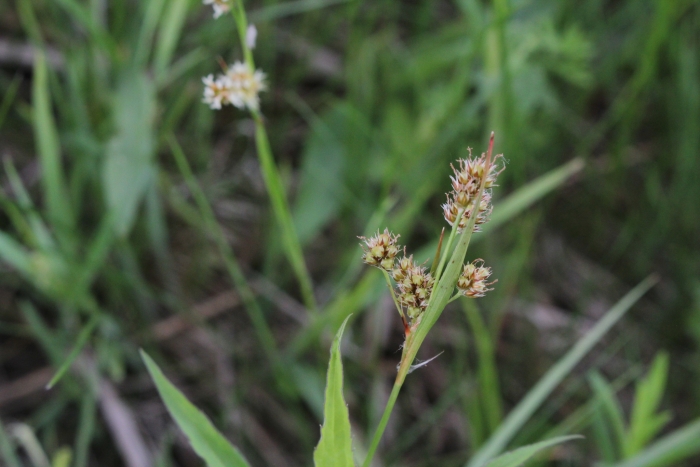Common Woodrush
(Luzula multiflora)
Common Woodrush (Luzula multiflora)
/
/

Quinten Wiegersma
CC BY 4.0
Image By:
Quinten Wiegersma
Recorded By:
Copyright:
CC BY 4.0
Copyright Notice:
Photo by: Quinten Wiegersma | License Type: CC BY 4.0 | License URL: http://creativecommons.org/licenses/by/4.0/ | Rights Holder: Quinten Wiegersma | Publisher: iNaturalist | Date Created: 2020-05-29T11:36:26-07:00 |

























Estimated Native Range
Summary
Luzula multiflora, commonly known as Common Woodrush or Heath Wood-rush, is a perennial herb native to a variety of habitats including moist, acidic upland woodlands, open grasslands, and alpine regions in Europe, Asia, and North America. It typically grows to a height of 4-16 inches (10-40 cm) and features basal leaves that are fringed with long, white hairs, giving it a distinctive appearance. The plant produces brown to black tepals and blooms in late spring with six-parted flowers that are not particularly showy but add a subtle charm to the understory.
Common Woodrush is appreciated for its ability to thrive in challenging environments, such as rocky or sandy soils, and its moderate shade tolerance. It is often used in garden settings for ground cover, in rock gardens, or as part of woodland plantings. This plant prefers moist conditions and acidic soils but can tolerate a range of soil types as long as they provide adequate drainage. It is relatively low-maintenance and can be a useful plant for erosion control on slopes. While generally disease-free, it can occasionally suffer from rust or fungal leaf spots.CC BY-SA 4.0
Common Woodrush is appreciated for its ability to thrive in challenging environments, such as rocky or sandy soils, and its moderate shade tolerance. It is often used in garden settings for ground cover, in rock gardens, or as part of woodland plantings. This plant prefers moist conditions and acidic soils but can tolerate a range of soil types as long as they provide adequate drainage. It is relatively low-maintenance and can be a useful plant for erosion control on slopes. While generally disease-free, it can occasionally suffer from rust or fungal leaf spots.CC BY-SA 4.0
Plant Description
- Plant Type: Grass
- Height: 1-2 feet
- Width: 1-2 feet
- Growth Rate: Moderate
- Flower Color: N/A
- Flowering Season: Spring, Summer
- Leaf Retention: Evergreen
Growth Requirements
- Sun: Full Sun, Part Shade
- Water: Medium
- Drainage: Fast, Medium
Common Uses
Border Plant, Groundcover, Low Maintenance
Natural Habitat
Moist, acidic upland woodlands, open grasslands, and alpine regions
Other Names
Common Names: Multiflowered Woodrush, Heath Woodrush
Scientific Names: , Luzula multiflora, Cyperella campestris var. multiflora, Gymnoides multiflora, Juncoides campestris subsp. multiflora, Juncus campestris subsp. multiflorus, Juncus multiflorus, Luzula campestris subsp. multiflora, Luzula campestris var. multiflora, Luzula campestris var. multiflora
GBIF Accepted Name: